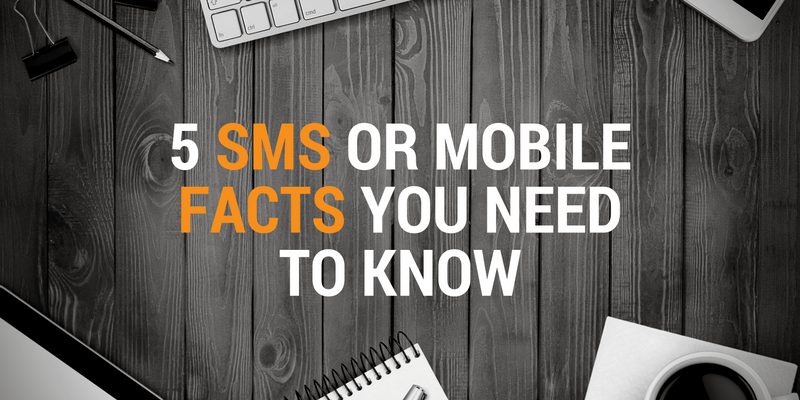SMS Marketing and Mobile Wallets

Apple Pay, Samsung Pay, Google Wallet (old or new). These are three of the most popular mobile wallets available today. If you haven’t heard of it, a mobile wallet is an application that allows you to pay anywhere using your mobile phone. It is supposed to work at restaurants and retail stores, or really anywhere – depending on the version. The app is directly linked to your accounts so you theoretically don’t have to do anything except wave your phone over a special device when you checkout. Only about 32% of people are using mobile wallets, but that number is increasing fast. According to Allied Market Research, the mobile wallet market is set to grow 127.5% until 2020.
That growth provides an opportunity for those using SMS marketing. In one of my blogs last week, I talked about a marketing study by Vibes and what it said about SMS marketing. This week I wanted to take another look at it from the perspective of the mobile wallet industry, also covered in the report. It turns out there is a strong case for integrating your SMS marketing with mobile wallets. Let’s take a look.
Consumer choice on mobile offers
It’s no secret that consumers love personalised mobile offers. Just under 95% of consumers in the survey say they would save mobile wallet coupons that are personal. “Saving” means they would take action on the offer to “cut” the coupon and place it in the mobile wallet where they could easily use it later. This often happens by clicking a button that says “Save to Passbook” or something similar (Passbook is the name of Apple’s mobile wallet application).
When asked how they wanted to receive the mobile wallet offers, 50% chose email as their first choice. Twenty percent chose text messaging as their first choice. But 28% chose text messaging as their second choice, and 23% chose email as a second choice. Those numbers might be a bit confusing, but it boils down to 83% prefer email and 48% prefer text as their first or second choice to receive mobile wallet offers.
You might be thinking, well that means I should be using email! Of course you should, multichannel marketing is the only way to reach every customer in today’s world. But it’s also worth noting that the survey was heavily weighted to older generations. Only 31% of respondents were under 35. When you look at the age breakdown, those under 35 strongly prefer text, whereas those over 35 preferred email.
So sticking to multichannel marketing is best, but it’s very likely that the text preference numbers will grow as the population ages, and possibly much faster as SMS marketing grows too.
The trouble with mobile coupons
Much of SMS marketing revolves around sending coupons or offers to customers on your list. But because of the limitations of SMS messaging, the details of the offers are usually provided in a link of some sort. That link often goes to a mobile-optimised web page with the coupon or special offer code.
In order for someone to use that coupon, they either need to keep that webpage open when they visit the store so it can be scanned, they can take a screen shot, they could print it from that page if they are able, or they could potentially click on it to use it in an online store.
If you’re shopping online, this process isn’t too bad. The coupon codes are often automatically activated when you shop so there’s no work to do on your part. But if you want to use the coupon in a store, it might or might not be so easy.
As an example, when I shop at my favorite craft store, it usually isn’t until I get in line at the registers that I remember I probably have a coupon to use. I open my email, search for the most recent coupon, then I have to click on the link, then wait for the coupon to load, then keep that page open until I reach the register (and there’s always a long line). The same is true if I have a coupon in an SMS message, though they are easier to find since I only have to search the one conversation (vs. all the emails in my inbox). But I still need to click and keep the page open.
That’s assuming the page loads at all. The location the store is in a horrible spot for mobile signals. Their Wi-Fi is slow too. So sometimes I’m the one slowing the line down just because I’m waiting for a coupon to load.
Though I haven’t yet started using mobile wallets for payments, I certainly would love to be able to capture my coupons easily so I can use them at my convenience. I know the people in line behind me would love me to do that too!
Being able to save the coupons to a mobile wallet would also improve my opinion of the retailer because they are making my life easier. The Vibes survey said 59% of people would have a better opinion of a retailer if they offered digitised coupons.
Digital coupons are so popular, 82% say they prefer them over physical coupons. When asked how they would like to receive digital coupons in SMS messages, 46% say they prefer to be taken to a mobile website. It’s on that website where you, as a retailer, can add the option to save the coupon to a mobile wallet. Many major retailers are doing this through websites like Coupons.com. So while it’s an option to develop your own solution to integrate into mobile wallets (each wallet type has its own requirements), you could leverage a third party service to do it for you as well.
Just to give you the whole picture on mobile coupons, 25% said they wanted either a video or photo embedded into their SMS message with the coupon information. Another 29% said they weren’t sure about their preference for receiving mobile coupons via SMS.
Given the older demographic of the survey, it isn’t surprising so many weren’t sure what they prefer with SMS coupon offers. Using links satisfies most customers, and also gives you the benefits of tracking the link and the actions afterwards.
When to jump into mobile wallets
While many major retailers are using mobile wallets for their coupons, the market is still a bit unsettled. I mentioned three major players offering solutions at the start of this blog. Google is about to launch (or may have by the time of reading) a new approach to mobile wallets that may change how they are integrated into Android phones. It may or may not have an impact on how Apple manages their mobile wallet and payment systems. It probably competes directly with Samsung Pay that uses still a different technology.
There is a huge opportunity for retailers who can connect their SMS marketing with mobile wallets. But you’ll probably want to investigate the various options and see when the time is right for you to add it into the mix.
Related Articles
What Your Customers Want From SMS Marketing
Mobile marketing offers an unprecedented access to your customers virtually any time, anywhere. This is particularly true for SMS marketing because it is “always on”. Customers don’t have to be surfing the web, or using an app to receive messages. Instead, they see the marketing messages right alongside ones from their friends and family.
How an SMS Customer Survey can Take Your Business to the Next Level
When it comes to small to medium sized businesses, however, a lot of companies believe that they don't have the time or resources to truly find out who their customers are. This often results in confused messaging, emails with low open rates and low conversion levels on their website. There is, however, a way that businesses can collect precious data from their customers which will not only help them engage with their customer base on a personal level but also result in data which can help power future marketing campaigns as well as improve aspects of the company.
SMS Marketing and Mobile Wallets
In one of my blogs last week, I talked about a marketing study by Vibes and what it said about SMS marketing. This week I wanted to take another look at it from the perspective of the mobile wallet industry, also covered in the report. It turns out there is a strong case for integrating your SMS marketing with mobile wallets. Let’s take a look.
5 SMS or Mobile Facts You Need to Know
So many of us are used to having our mobiles around nearly 24 hours a day that it’s easy to forget it’s still a growing industry. And though SMS has been around for over two decades, the ways we use it and people’s willingness to use it continues to grow. So for this blog I picked out five facts about mobile and SMS that really make the case that SMS for business has come of age. Let’s see if you agree.
Don’t Believe The Myth of The “Cashless Shopper”
Sometimes bloggers or journalists get a bit carried away. They see some data or fact, and run off to declare there’s a trend you need to know about. The latest one I’ve seen is all about how to reach the generation of “cashless shoppers”. The argument goes that you need to use SMS messaging to reach customers because they are all shopping online – where you obviously can’t pay in cash.
3 Retail Predictions to Increase Footfalls This Holiday Season with SMS Messaging
Last year footfalls for some high street shops dropped during the Black Friday weekend. Even though the UK spent a record breaking £1.1B, some saw their in-store sales slump. Find out the three things retailers need to do to get customers to come back.
Enhancing Two-Way SMS Messaging with Autoresponders
SMS messaging can be a one-way, or a two-way affair. Sending coupons, sale notifications, or event announcements are all one-way messaging. The recipient doesn’t need to reply in order to use the information sent. In two-way messaging though, recipients can reply to your messages. And that makes it much more interesting, engaging, and potentially a lot more work to manage.
Do This One Thing and You’ll Improve Your SMS Marketing ROI
SMS marketing is not quite like most other marketing. You have such a limited space to get your point across, just 160 characters, more or less. It’s not unlike having to create a print advert for a small space, but somehow it can seem more intimidating. That’s why sometimes it seems like marketers forget one basic rule about writing offers: Always lead with the offer! Sounds simple, right?
5 Ways to Use SMS to Save Money and Improve Your Retail Business
Every good retail business owner knows that the key to success is keeping his or her customers happy. Your level of customer service should be all encompassing to succeed and should consist of more than just being polite to the customer at the till.
The Role of SMS in Building Consumer Loyalty Programmes
The drive to earn and retain consumer loyalty is big business in the UK. Increasingly, companies are grasping the important role SMS text messaging can play in this. Customers’ mobile phone numbers are gold dust. The most forward-looking companies are developing systems to encourage customers to opt-in. Then, they are structuring SMS campaigns to build loyalty and reap maximum commercial advantage from it.











